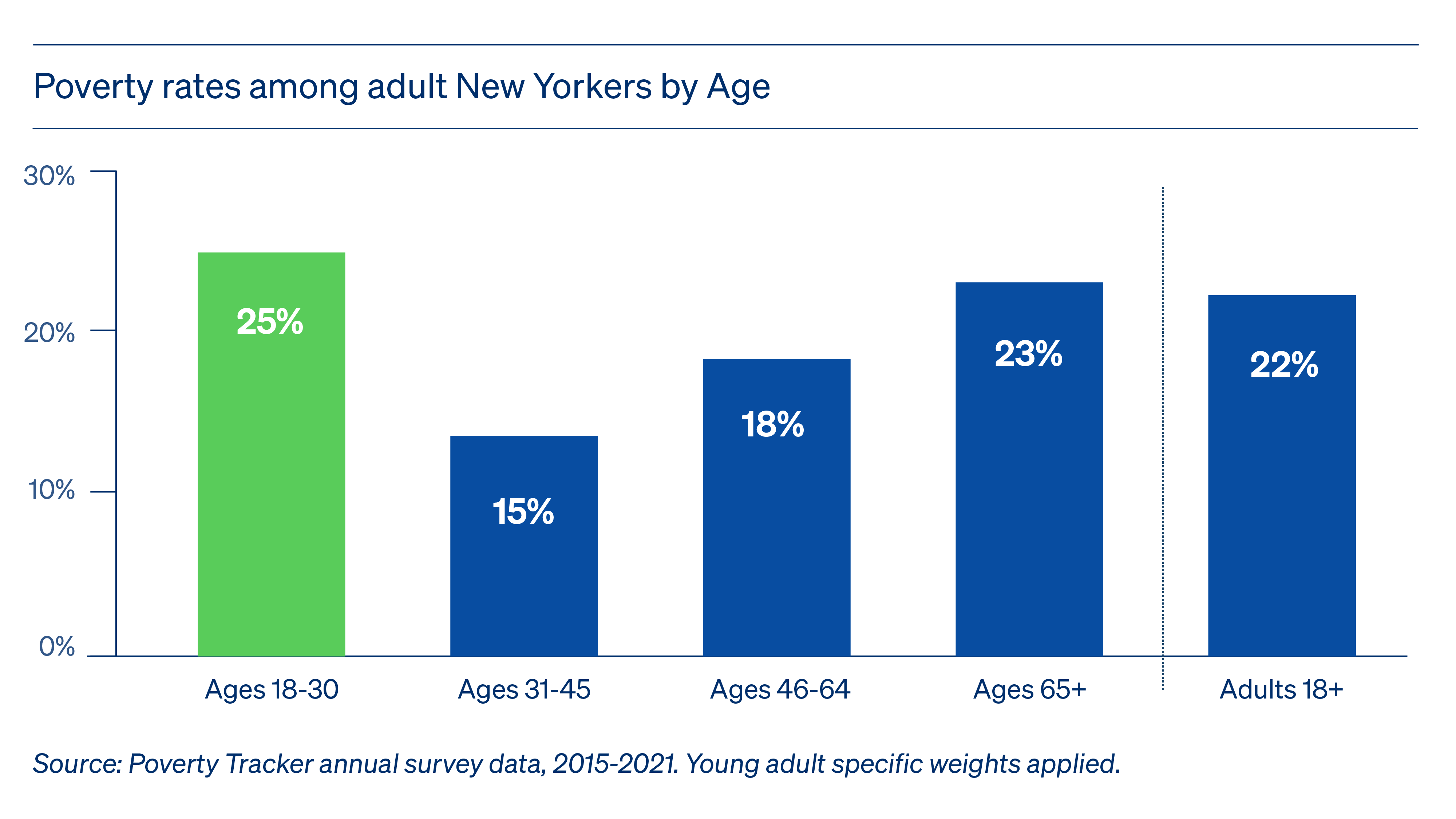June 2024
Spotlight on: Young Adults in New York City
Young adult New Yorkers experience the highest rate of poverty among all adults, and are often excluded from traditional stabilizing solutions.
Contributors: Anastasia Koutavas, Sophie Collyer, Yajun Jia, and Christopher Wimer
Issues Areas: Education, Financial Security
This special spotlight report tracks the incidence of poverty and hardship among young adult New Yorkers, ages 18-30. The report examines this population’s experiences over a six-year period between 2015 and 2021 and explores how factors like underemployment, housing affordability, and educational costs negatively impact this population’s pursuit for financial stability and economic mobility.
Among the key findings:
EMPLOYMENT
- The overall poverty rate of young adults is 25% and among young adults working full-time, it is nearly double that of adults ages 31-45 working full-time (14% vs 8%).
- Young adult New Yorkers are willing to work greater hours in order to earn more, but employers are not meeting this demand.
- More than half (53%) of employed young adults express a desire to work more hours.
- Nearly 70% of young adults have looked for work in the past year, compared to less than half of 31-45-year-olds (46%).
EDUCATION
- 1 in 5 (20%) of young adults are students.
- 38% of student young adults are in poverty, compared to 21% of non-student young adults.
- Among young adults with some or more college experience, those who have student debt are more likely to be in poverty (26%) than non-debt holders (18%).
LIVING ARRANGEMENTS
- Living with adult family members and splitting household costs provides some relief, but not enough for young adults to evade high poverty rates.
-
- 48% live with adult family members and only 16% live with their own child.
- Young adults living with adult family members had a poverty rate of 26% compared to 34% for those living without any other adults
DEMOGRAPHICS
- Asian (28%), Black (28%), and Latinx (29%) young adults face higher poverty rates than white young adults (16%).
- Foreign-born young adults experience poverty at higher rates than young adults born in the U.S. (32% vs 22%).
- Female young adults are more likely to live in poverty than male young adults (27% vs 23%).

Poverty Tracker data reveals that employment is not a silver bullet for this generation of young adults, offering less economic security and career mobility. Similarly, pursuing higher education for the promise of greater lifetime earnings too often coincides with increased poverty and debt accumulation.
Robin Hood-funded solutions like income and tuition supports, paid apprenticeships, and in-demand upskilling are data-supported interventions that can improve young adults’ economic well-being now and in the future.